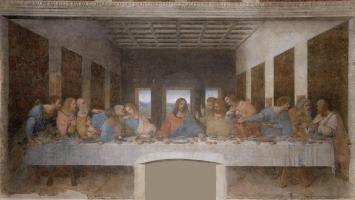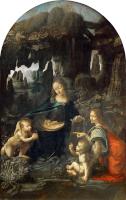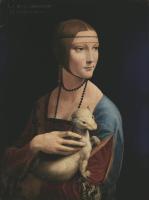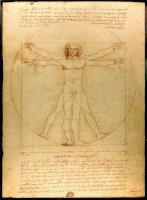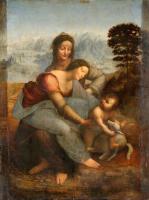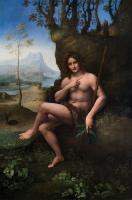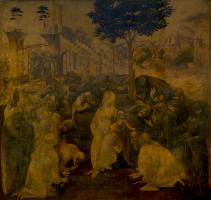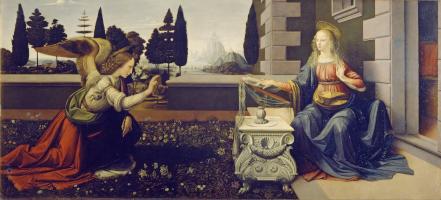Leonardo da Vinci
Leonardo, born in the small village of Vinci in Tuscany, was the illegitimate son of a Florentine notary. He studied under Verrochio, who is said to have given up painting almost entirely as a result of his pupil’s outstanding ability.
He was the greatest universal genius of the Italian Renaissance, when intellectual and artistic supremacy were admired above all, and the ideal man was accomplished in almost every sphere. Apart from his skill as a painter and sculptor, he was a brilliant scientist, musician, poet, military engineer and inventor, with one of the most versatile minds in history. He came near to discovering the circulation of the blood, made preliminary designs for several aircraft, a submarine and the first armoured vehicle; he made intense studies of anatomy, the formation of rocks and the fall of drapery, and produced endless notes and drawings that reveal his curiosity and inventiveness. His working methods were slow and his interests so varied that he rarely completed a project — it was abandoned as soon as he felt he had ‘solved the problem’. As a result very few finished paintings by him exist.
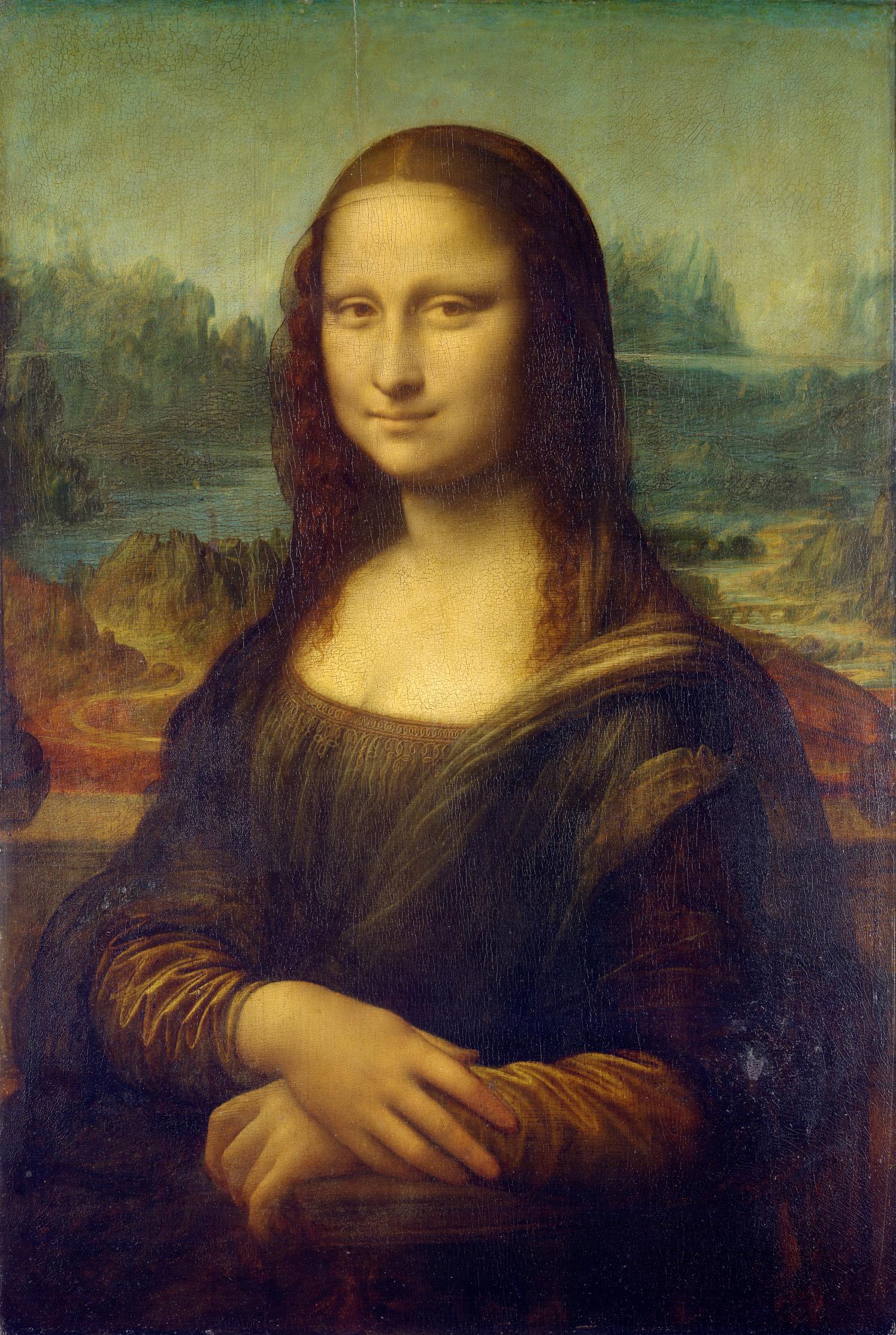 He worked on the Mona Lisa for nearly four years, and it was completed around 1503.
Mona comes from Madonna meaning madam, and the woman is thought to be the
wife of the silk merchant Francesco del Giocondo (the picture is also
known as La Gioconda). She would have been about twenty-four when Leonardo
began her portrait. Her identity is not entirely certain — the painting itself
has few specific clues — and the power of the picture has probably been
enhanced by the mystery surrounding it.
He worked on the Mona Lisa for nearly four years, and it was completed around 1503.
Mona comes from Madonna meaning madam, and the woman is thought to be the
wife of the silk merchant Francesco del Giocondo (the picture is also
known as La Gioconda). She would have been about twenty-four when Leonardo
began her portrait. Her identity is not entirely certain — the painting itself
has few specific clues — and the power of the picture has probably been
enhanced by the mystery surrounding it.
We know the figure was framed originally by two stone columns as well as by the parapet behind her. Her body is turned at a slight angle and her eyes gaze directly towards us. Her strangely enigmatic expression has fascinated the world for hundreds of years. Her lips show the trace of a smile and her penetrating eyes under heavy lids appear to be studying us rather than the other way around.
A wide forehead, and eyebrows plucked to the point of invisibility, were marks of beauty in the Renaissance world, and her hair parted in the centre and drawn away from her face accentuates these features and heightens her air of composure. Chestnut curls falling to her shoulders are covered by a veil of fine gauze. Her hands are folded in her lap, and her long delicate fingers rest on the shining folds of her dress.
An imaginary landscape provides a muted backcloth. Its jagged bare mountains, dissected by a river and a winding road, tower starkly over the sea, and its wildness and hostility provide a marked contrast to the calm face of the woman.
The paint is applied with fine detailed brushwork that reveals the textures of drapery, hair and flesh. The evening light and the sombre colours of the woman’s classically simple dress throw her face and neck into relief. Leonardo believed that twilight provided the perfect atmosphere for portraits, warming skin tones and softening the contours of a face.
By the time he painted the Mona Lisa Leonardo’s reputation was firmly established. He reached unequalled heights in an age of great artistic achievement, and his paintings and drawings have been copied and circulated ever since. The Mona Lisa has undoubtedly become the most famous picture in the world.


